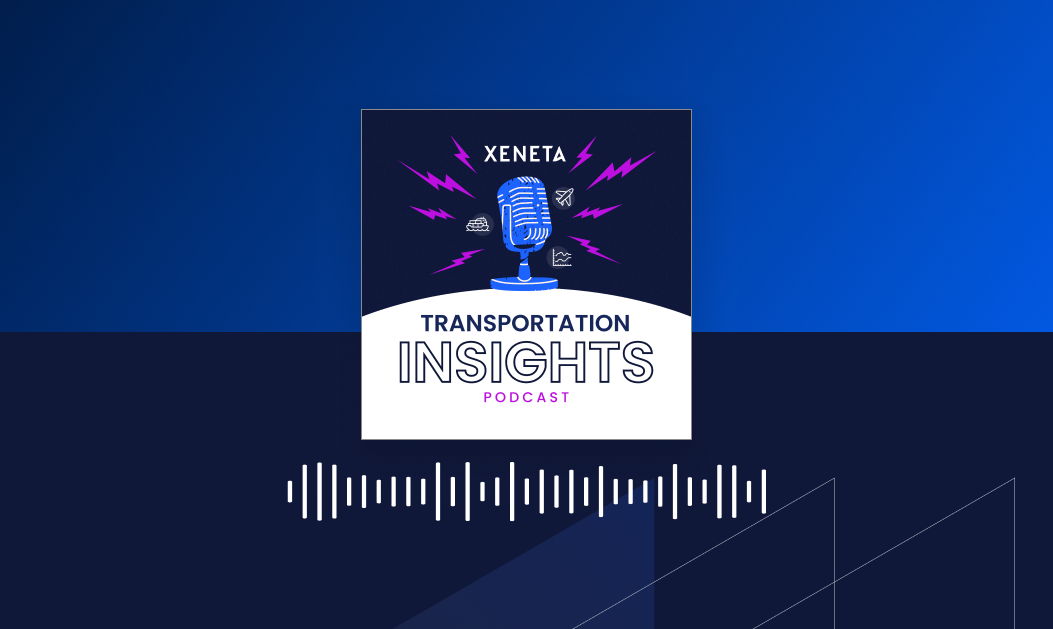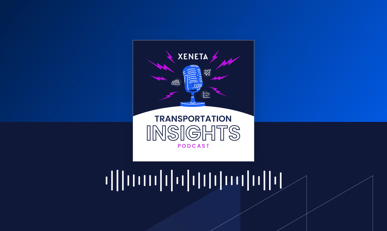Whatever has affected the shippers, BCOs, carriers and freight forwarders in the dry space in the last few years has also affected the cold chain space but in a much different way.
In the latest episode of our Transportation Insights podcast, Peter Sand, Chief Analyst at Xeneta, discussed the key aspects of the global reefer business with Thomas Eskesen, Founder of Eskesen Advisory. Tune in to learn key recommendations for future contract negotiations if you are struggling due to rapidly changing market and supply chain disruptions.
Key Highlights
- The ripple effect from the increase in blanked sailings
- Are we headed towards a supply crisis?
- Tips for upcoming contract negotiations
- The role innovation will play in sustainability
- and more...
Are you more of a reader? Scroll ahead to read the full episode summary.
Talking about the challenges and future of the reefer market, Thomas shared the top three most important aspects of the global reefer business in 2023, which is also a topic for his session in the TPM23 next week.
Just think about what you put in your freezer. Reefer containers ship these kinds of products. The entire cold chain is linked. The journey of the blueberries in our refrigerator starts at a farm in Peru, for example, and involves many handover points from a packed house to a truck, to a port, vessels, to a distribution center in another country.
This link was broken during Covid, causing the biggest challenge to the global cold chain. One significant issue was that perishable items could not move freely due to congestion.
Shippers with perishable or temperature-sensitive goods either suffered the loss of their products or dramatically reduced shelf life, ultimately suffering many financial implications across the cold chain. After the pandemic, we are trying to clean up the mess created during the Covid, including the financial loss.
Painting a picture of the aftermath of the pandemic, Thomas revisited the dramatic increases in input costs for farmers worldwide during covid. The cost of packaging, fertilizer, electricity and labor went up. Few farmers even suffered labor shortages because of covid restrictions on certain things.
Along with the disruptions in ports in China and congestion in many places, we also saw a lack of truck drivers. Last but not least, the ocean freight shipping costs skyrocketed for growers or shippers of protein, and not all markets were prepared to take that extra hit on the cost side.
So, the main priority, as per Thomas, is to help find a way to navigate the post covid market till things return to normal. This is important for some farmers who have lost a lot of money in the past couple of years.
"We are in a situation where we have moved to a supply crisis," states Thomas, based on his experience of working on this issue with his clients, who are finding it difficult to analyze to which degree they should continue funding the next batch of fertilizers or packaging material.
"We will see big shortages of certain products this year on the farm side, simply because being a farmer is no longer viable."
Refrigerated space has a strong correlation between population growth and global food requirement. So it has been fairly easy to project 3 to 5% compound growth. We've all gotten used to that based on a demand-driven shipping pattern. But now we must look more on the supply side to avoid value destruction.
Giving an example of his customers in the BCO reefer space, Thomas said that price setting in shipping is another aspect that has changed since Covid.
Most BCOs read the same market news and follow the Shanghai Freight Index. But when Shanghai Freight Index went back to pre covid level in the last month, they didn't see the same correction back to pre covid when looking at their transport cost in the southern hemisphere.
The reason is a faulty price point. Shanghai may have 20 viable shipping lines and 50 NGOs at any given point to offer thousand moving price points. However, when shipping from South Africa to the United States, there's a choice of only two shipping lines, which are not necessarily reacting the same way. Due to a faulty price point, they saw a delayed effect.
Since there is a huge difference between the dry cargo business and the cold chain business, it is no longer relevant to only look at the Shanghai Index. A more comprehensive solution is needed to deliver an insightful picture of all trades.
There is a certain level of complexity when dealing with modern nature in terms of farming or even modern nature in terms of global warming with seafood, overfishing, etc. There are a lot of quotas on pork and trade berries. When dealing with a live product, any delay can cause critical damage.
Another aspect of the cold chain in 2023 that is gaining popularity is consolidation. Thomas says there's still a lot of room for consolidation, both on the agricultural and asset sides. Cold storage businesses usually suffer from under-capacity.
Currently, there's a lot of interest in either merging or doing greenfield projects. Most family-owned businesses that used to dominate this space are struggling because building a new modern cold storage facility that is almost self-sufficient in energy with solar would cost them over a hundred million to get it off the ground.
Blank sailings in the dry container segment cause a ripple effect on the entire cold chain.
Often people only have a line of sight into their geography. So a big protein shipper in Brazil would usually ignore the news of blank sailings out of Asia post-Chinese new year.
But we have seen in the past that if you have a significant amount of blank sailings, particularly from China, it can have global ripple effects from the standpoint that China is the only place in the world where we manufacture new reefer boxes. It's also typically a surplus area of many imported goods as China is consuming more and more fresh fruit and vegetables, and protein from the world.
But how can we stay ahead of the market development?
"The best advice is to stay close to your partners of choice in a particular country to get some lead time because nobody is necessarily safe when you have a lot of blank sailings," says Thomas.
Talking about the upcoming contract negotiations, Thomas also discussed the key contract negotiation tactics for shippers in 2023.
Four years ago, there was little need to advise BCOs as they were spoilt for choices. They got what they needed and paid a good premium price for instant cargo. But during covid, as the dry rates exploded, it was hard to move empty reefers around. Shipping lines also downplayed the reefer cargo and chose to opt for the dry cargo more as the revenue was higher.
Post-pandemic, Thomas says he now advises his clients on a much more granular level, based on commodity segments, as there is a big difference in moving 300 containers of bananas every week compared to shipping pharmaceutical products from Europe into the US, for example.
He advises staying close to the shipping lines headquarters as we can not afford to work with hearsay by ignoring the global context in the cold chain.
We can see many shipping lines are interested in growing their portfolio. They're interested in innovating with reefer shippers, so the closer you are to headquarters, the better.
We do see significantly different strategies by the top five or six ocean liners that, in the reefer space, control 80% of all the plots and the containers. It's a far more concentrated space. The barrier to entry is huge. Thomas believes this is still very much a relationship and an innovation-based business.
Shippers had a few years out in the cold, but now they feel the comforts of the carriers who are ready to embrace their business once again.
"It is not just about the price but also the service and ensuring it works. It's life or death to protect the cold chain," Thomas adds.
What's next in line for the innovation of the reefer business?
From a food waste point of view, we are looking at 30-40% food waste and wonder where does it that happen? But shipping executives didn't usually have good data on what happens inside the container. But we have seen accelerated development in the last decade, and the term smart container is now a reality.
"It becomes a secret source for innovation when you know what's happening in my custody. What could I do if I had smarter packaging? Data is the only way to improve food waste."
We are still far away from realizing the potential of innovation in shipping. Since carriers have printed a little bit of cash in the last two years, there are reasonable expectations among BCO customers that some of that will be put back into innovation and not just more containers. There's still a lot to be done in a very fragmented industry.
Is the whole industry of global cold chain logistics bracing for sustainability?
It's a challenge for people to focus on this as it is a massive undertaking. Thomas predicts that in the next few years, this industry will be more focused on IMO and environmental compliance, which is a good thing overall but would come with caution.
"If the tactics to lower or improve your emissions rating on a ship would mean going 10% slower, for example. People in the reefer business would see longer transport and lower prices. If we don't develop something that protects shelf life in the same way as plastic, we may be super sustainable, but our yield per acre will be less. So it is incredibly complicated, but technology can help."








